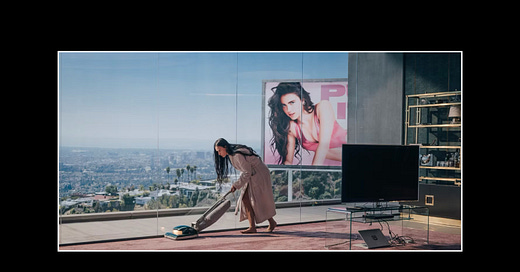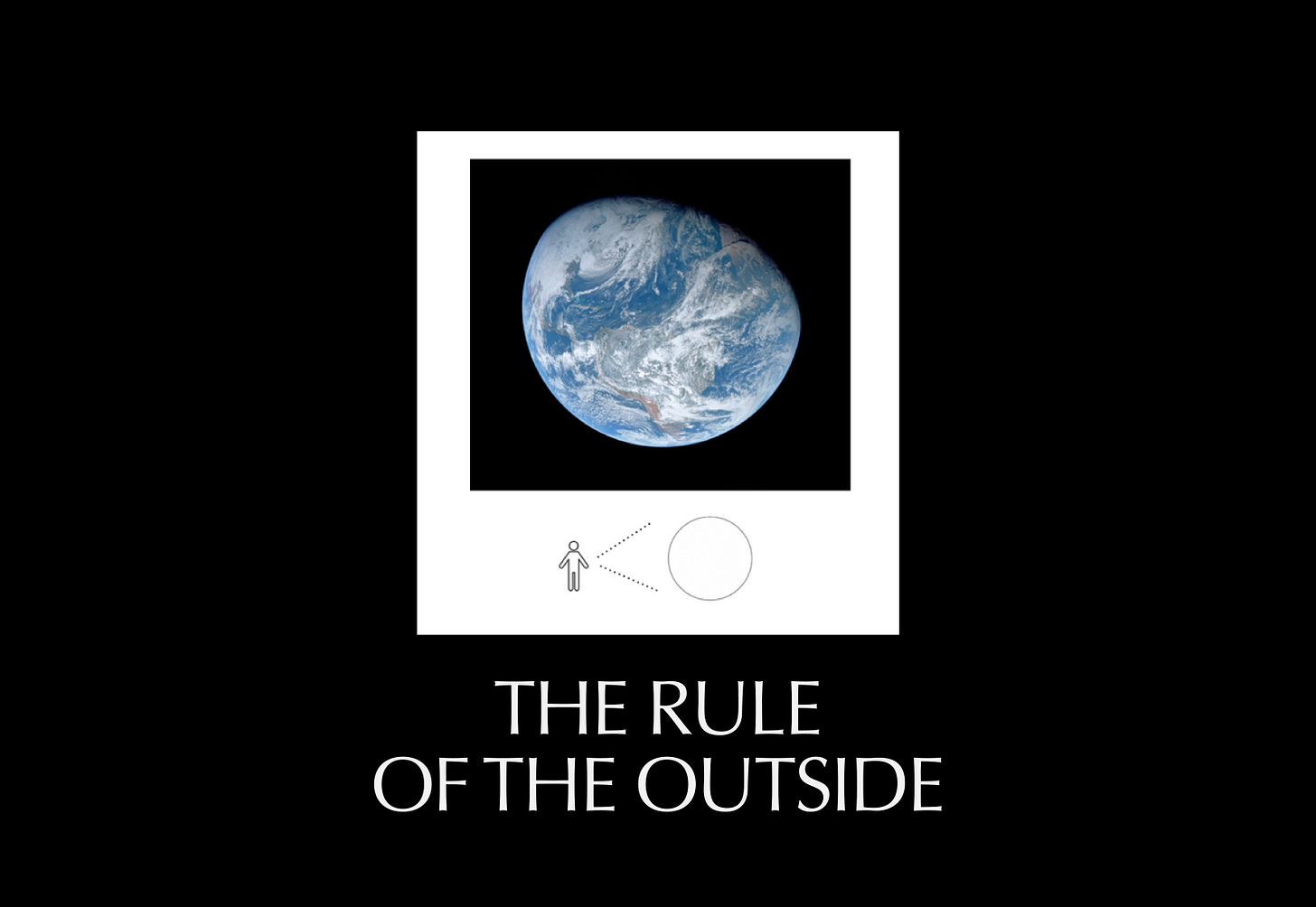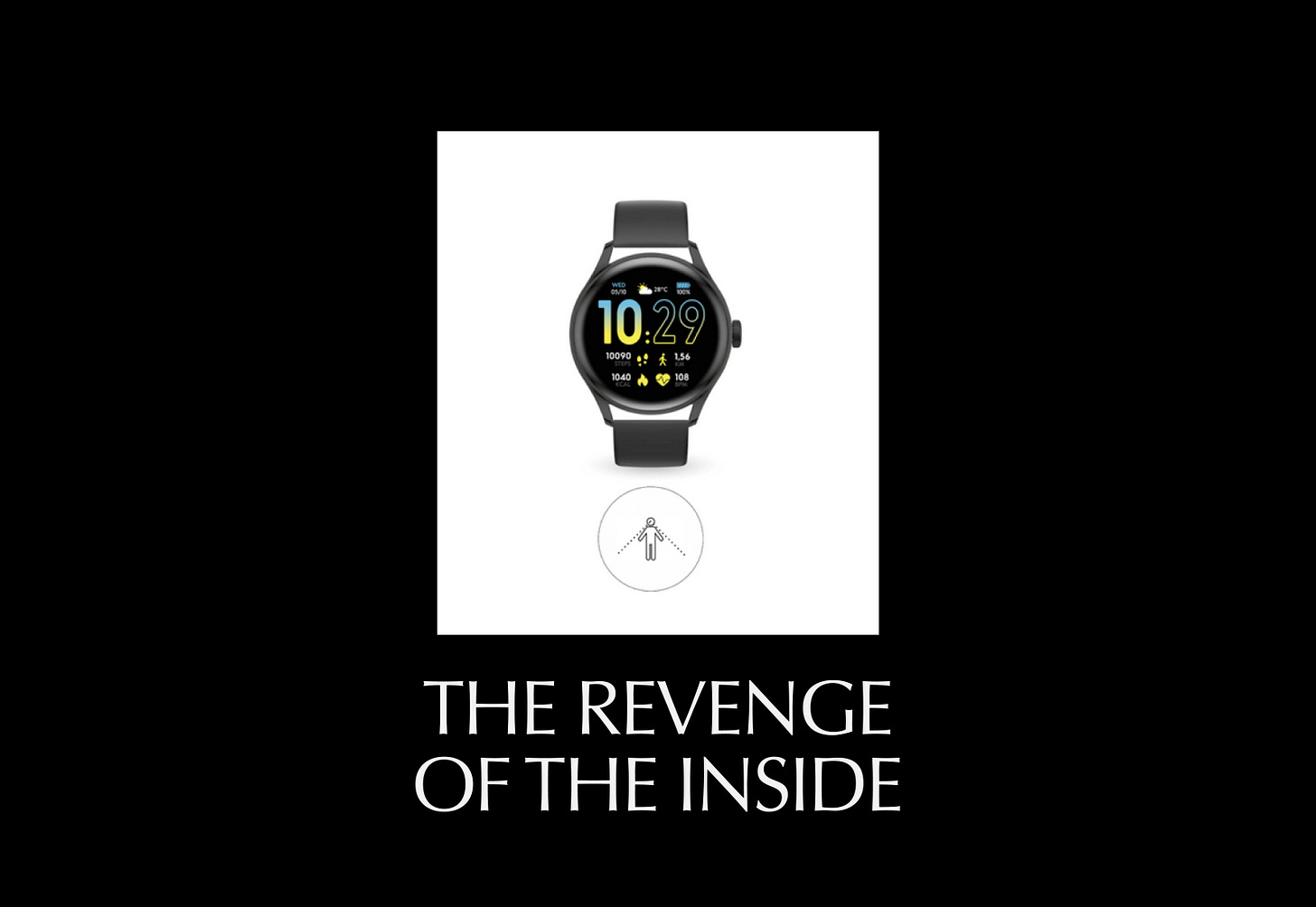The late 20th century was giving extrovert. The changes that were borne in the world were macro in focus. Big institutions, big globalism, mass media empires, the whole earth ecology, and expansion were de rigeur.
The early 21st century, by contrast, seems to be shifting away from this macro focus and instead toward introspection. Introvertist and mindful “California sobriety,” quiet quitting, wearable-based fitness programs, therapy speak, political nativism—so many shifts in culture seem to be moving inward.
Back in the 1960s, when visionaries like Stewart Brand and Buckminster Fuller saw some of the early satellite photos taken of the Earth being produced by NASA, they knew that when people saw the image for the first time, there would be serious implications for how people saw themselves, the Earth, and their relation to it. After a particularly ponderous LSD trip, Brand went so far as to start an initiative to get NASA to release whole Earth images to the public, distributing badges emblazoned with the provocative statement “Why haven’t we seen a photograph of the whole Earth yet?”
Their movement would go from fringe to mainstream in 1968, when the first whole Earth photo made an appearance on the front cover of Time Magazine, labelled Earthrise. The image, taken by astronaut William Anders from aboard the Apollo 8 mission, depicted a distant Earth rising over the lunar surface amidst the abyss of deep space. It was the first time the Earth was photographed as a whole planet, as something at-a-distance, beyond the perspective any human had known until that point, abstracting the burden of our small earthbound perspective.
This is New World Order. A six part newsletter series about how power, politics and ideologies merge with digital infrastructure in 2025.
In our last three newsletters we described why being good is over, how this leads us to bet on a whole portfolio of identities and belief systems, and how fringe collective thoughtforms make it into the center of conversation.
In popular culture the Earthrise photo became a cultural signifier, so much so that Brand began using it to launch the Whole Earth Catalog, a newsletter and catalog that forged a DIY spirit with the nascent ecological counter culture brewing in his native California. This holistic image of the Earth became a way to visualize this big outward idea - that we were living on one big Earth and that our decisions should be focused on that largesse.
Remember the early years of the internet and social media, when even Facebook used the “global village” metaphor extensively to portray its mission to bring people around the world together? Much of Silicon Valley’s culture, from its early days in the 1980s to the 2010s, has been inspired by Brand’s ideology. Which, in theory, could be wonderful, if only that global village wouldn’t have dovetailed into an adtech hellscape full of spam slop and porn bots in your front lawn.
Let’s be honest, in retrospect that big macro energy wrought a lot of problems. Globalization was disastrous for many around the world and only fulfilled its promises of prosperity for certain people and places. And anyway, its future is clearly doomed by Trump’s trade wars and has been deemed a potential hazard by a global pandemic; younger generations are black-pilled by a never ending climate crisis that Brand’s generation never really helped to mitigate.
This shows in their reluctance to participate in what they see as a broken system; and what fragments are left of the "Great Society" are now splitting into tribalist camps of patchwork nationalists, crypto degens, millions of migrant families forced to find a place to root amid trying political or economic fortunes, mutual aid brigadeers, or have become sordid brain rot shut-ins as consensus values break apart into a million niche subcultures at escape velocity.
What we learned the hard way was that the whole world perspective meant a flattening of political agency and meaning in the small worlds of our lives. What this leads to is an acute alienation that emerges when more and more of our lives fail to be captured in the aggregate picture being sold to us.
So we’ve turned away and retreated inward, hoping that at least that will make sense.
We turn inward to control ourselves, our community, or our algorithmic feed because we fear the big picture outside that has let us down.
The inside-out perspective is a response to a complex world where the democratization of technology offers the promise of agency. Wearable devices are sensing our glucose levels, heart rates and brain waves in real time while the health of our bodies are related to metrics displayed on our watches. We channel this into gram-by-gram intake of protein and vitamin regimes we found on Youtube, in a search for longer lives, better health, or more energy for getting ahead offered to us daily with a granularity usually reserved for medical specialists.
At the same time, “therapy speak” has become ubiquitous online and people broadcast the most intimate details of their lives outward airing our psychodramas in public as a testament to self-improvement and agency. Even movies like Inside Out take kids (and adults) on a journey of self-discovery through the depiction of emotions-made-mascot literally driving a child’s life from the inside and teaching us lessons about how to control our emotions and bettering our station.
Our media too is no longer broadcast to the public but made “For You,” a moodboard to “explore,” tailored to every click or view to better personalize our experience and create signature identities through the social graphs and data points we create through engagement.
For Brand and early ecologists, the goal of broadcasting the Earthrise image was to foment a big picture of humanity, staving off the existential risk born of nuclear war and ecological destruction. The thinking was that if people could see how small and insignificant our differences were on this little blue marble, we might just be able to start working together as a global community, compelled by our shared planetary existence.
Today, the same could be said for this inward facing moment, where the existential threat is understood as coming from inside the room.
Longevity movement gurus like Bryan Johnston are trying to overcome human death through science, political campaigns rely on the “enemy from within” narrative that depicts immigration as a threat to social survival, and even our feeble attempts at staving off social death by going offline means falling out of the network of professional or social networks you need to stay alive.
So, why haven’t we seen a photograph of our whole inner world yet? Because there isn’t one, but many.
Today our lives are saturated in images and we often view them in composite, in collections of feeds, across platforms, or as AI renders made of the culture and content we’ve been creating for the internet over the last decades. It's weird and eerie and often too suggestive. We’ve all gotten spooked by the all knowing ad which seems to pop up after we searched WebMD about acne and was quick to sell us skincare with a vivid depiction of how our skin could be.
Earthrise was about a collective vision, a utopian container to focus each of our desires on one aim. Today, the opposite is occurring.
The photograph is the mirror of our own making; a weird amalgam of everything we have said and done culturally throughout history all being aggregated, indexed, and curated to make sense of this human project.
And that’s why the new images and texts being created by AI might be the only reluctant candidate with the ability to provide us the inside out vision of our world. It’s an alien view just like that of the astronauts before, but this time from within.









